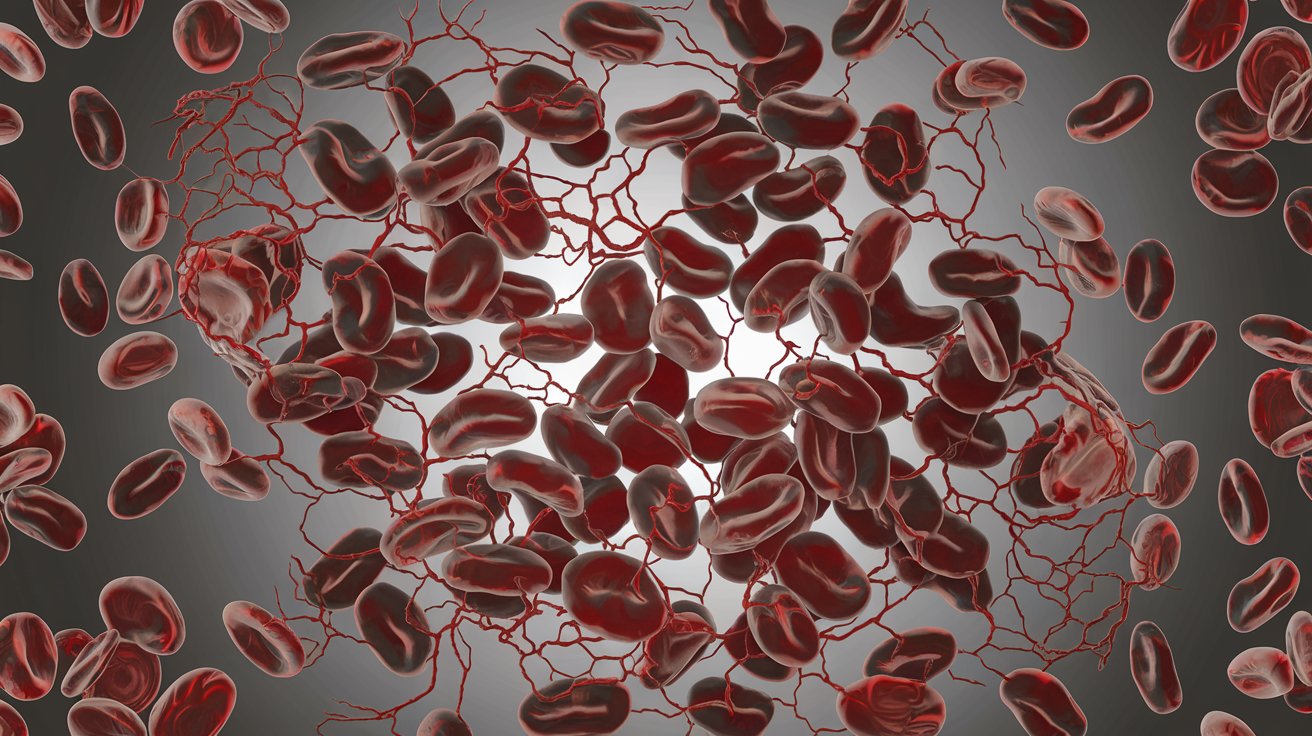
Glanzmann Thrombasthenia is a rare genetic disorder that affects the blood's ability to clot properly. This condition is caused by a deficiency or dysfunction of a protein called glycoprotein IIb/IIIa, which is crucial for platelet aggregation. People with Glanzmann Thrombasthenia often experience excessive bleeding, easy bruising, and prolonged bleeding times even from minor injuries. This disorder can be inherited in an autosomal recessive manner, meaning both parents must carry the defective gene. Symptoms can vary widely, from mild to severe, and may include frequent nosebleeds, heavy menstrual periods, and bleeding gums. Treatment typically involves managing bleeding episodes with platelet transfusions or medications that promote clotting. Understanding this condition is vital for those affected and their families, as it requires careful monitoring and specific medical care.
Key Takeaways:
- Glanzmann Thrombasthenia is a rare genetic disorder causing excessive bleeding due to faulty platelet function. It requires careful management and lifestyle adjustments to minimize bleeding risks.
- Ongoing research aims to improve the understanding and treatment of Glanzmann Thrombasthenia, with potential cures and innovative treatments being explored.
What is Glanzmann Thrombasthenia?
Glanzmann Thrombasthenia (GT) is a rare genetic disorder affecting blood clotting. People with GT have platelets that don't function properly, leading to excessive bleeding. Here are some fascinating facts about this condition.
- GT is named after Swiss pediatrician Eduard Glanzmann, who first described it in 1918.
- It is caused by mutations in the ITGA2B or ITGB3 genes.
- These genes are responsible for producing proteins essential for platelet aggregation.
- GT is inherited in an autosomal recessive manner.
- Both parents must carry the defective gene for a child to be affected.
- The disorder affects both males and females equally.
- GT is more common in populations with high rates of consanguinity.
- Symptoms often appear in infancy or early childhood.
- Common symptoms include easy bruising and nosebleeds.
- Severe cases can result in spontaneous internal bleeding.
Symptoms and Diagnosis
Understanding the symptoms and how GT is diagnosed can help in managing the condition effectively.
- Bleeding gums are a frequent symptom.
- Women with GT may experience heavy menstrual bleeding.
- Prolonged bleeding after surgery or dental work is common.
- Blood tests can reveal abnormal platelet function.
- Genetic testing can confirm a diagnosis of GT.
- Platelet aggregation studies are often used in diagnosis.
- GT can be mistaken for other bleeding disorders.
- A family history of bleeding disorders can be a clue.
- Some people with GT may have mild symptoms.
- Severe bleeding episodes can be life-threatening.
Treatment Options
While there is no cure for GT, various treatments can help manage the symptoms and prevent complications.
- Platelet transfusions are a common treatment.
- Antifibrinolytic drugs can help reduce bleeding.
- Hormonal therapy may be used to control heavy menstrual bleeding.
- Desmopressin (DDAVP) can sometimes be effective.
- Bone marrow transplantation is a potential cure but is risky.
- Avoiding medications that affect platelet function is crucial.
- Regular follow-ups with a hematologist are essential.
- Emergency medical care may be needed for severe bleeding.
- Patients should wear medical alert bracelets.
- Genetic counseling can help families understand the risks.
Living with Glanzmann Thrombasthenia
Living with GT requires careful management and lifestyle adjustments to minimize bleeding risks.
- Avoiding contact sports can prevent injuries.
- Using soft-bristled toothbrushes can reduce gum bleeding.
- Patients should be cautious with sharp objects.
- Wearing protective gear during activities is advisable.
- Maintaining good dental hygiene is important.
- Regular check-ups with healthcare providers are necessary.
- Educating family and friends about GT can be helpful.
- Joining support groups can provide emotional support.
- Patients may need to carry emergency medication.
- Planning for pregnancy requires special medical care.
Research and Future Directions
Ongoing research aims to improve the understanding and treatment of GT.
- Gene therapy is being explored as a potential cure.
- New medications are being developed to enhance platelet function.
- Clinical trials are testing innovative treatments.
- Researchers are studying the genetic basis of GT.
- Advances in genetic testing are improving diagnosis.
- Patient registries are helping to collect valuable data.
- Collaboration between researchers and clinicians is crucial.
- Public awareness campaigns can help increase understanding.
- Funding for research is essential for progress.
- Patients and families can participate in research studies.
Final Thoughts on Glanzmann Thrombasthenia
Glanzmann Thrombasthenia, a rare genetic disorder, affects platelet function, leading to excessive bleeding. Understanding its symptoms, such as easy bruising, nosebleeds, and prolonged bleeding from minor cuts, is crucial for early diagnosis. Genetic testing confirms the condition, and while there's no cure, treatments like platelet transfusions and medications help manage symptoms.
Living with Glanzmann Thrombasthenia requires vigilance and a proactive approach to healthcare. Patients should avoid activities that increase bleeding risk and maintain regular check-ups with healthcare providers. Support from family, friends, and patient communities can make a significant difference in managing the emotional and physical challenges of this condition.
By spreading awareness and supporting research, we can improve the quality of life for those affected by Glanzmann Thrombasthenia and move closer to finding better treatments and, hopefully, a cure.
Frequently Asked Questions
Was this page helpful?
Our commitment to delivering trustworthy and engaging content is at the heart of what we do. Each fact on our site is contributed by real users like you, bringing a wealth of diverse insights and information. To ensure the highest standards of accuracy and reliability, our dedicated editors meticulously review each submission. This process guarantees that the facts we share are not only fascinating but also credible. Trust in our commitment to quality and authenticity as you explore and learn with us.
